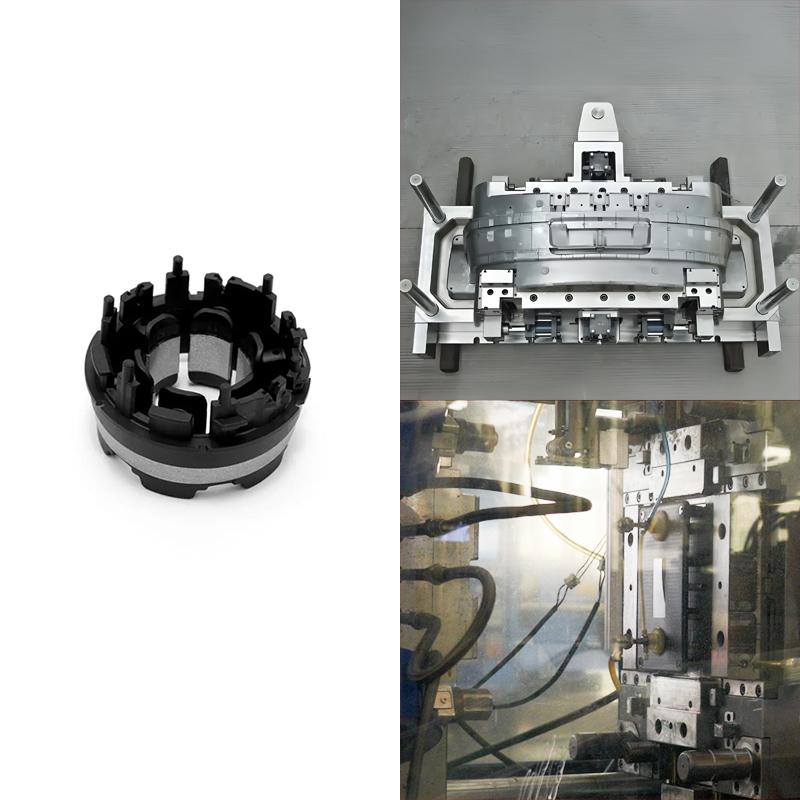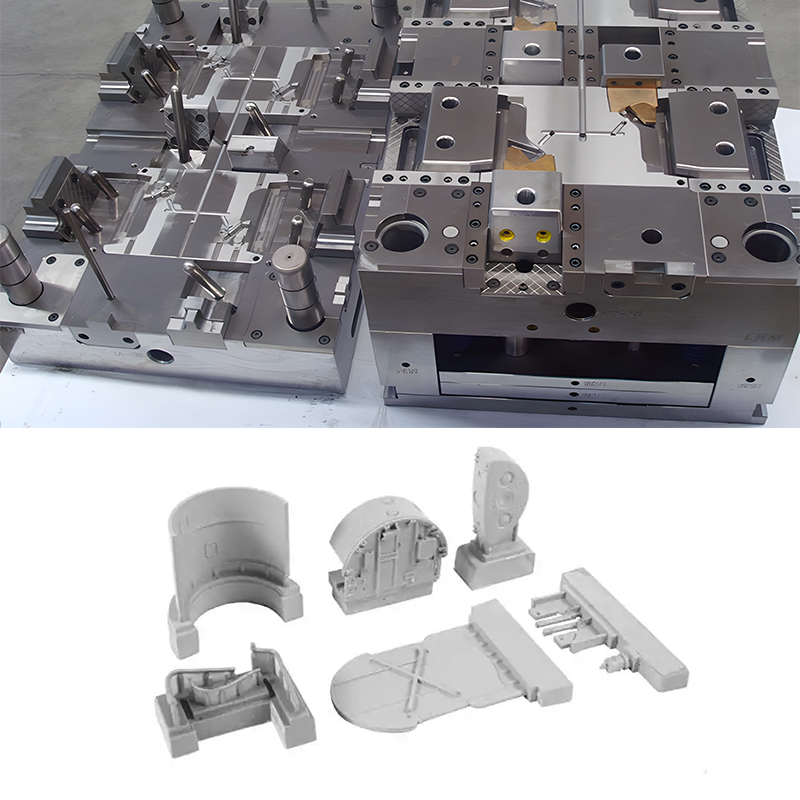The aesthetic appeal of a product plays a crucial role in how seriously people perceive its inherent qualities and their decision to purchase it. The attractiveness of a product primarily hinges upon its visual aspects, such as its appearance, shape, and color. To attain a visually pleasing and cohesive color, people usually employ various coloring techniques. In the plastics industry, plastic coloring holds great significance, and one commonly utilized raw material for coloring plastic products during injection molding production is a color masterbatch.
Next, we will comprehend the details of color masterbatch in injection molding to enhance the coloration of plastic items.

Features of Color Masterbatch In Injection Molding
Masterbatch is a type of colorant used for polymer materials commonly employed in the plastics industry. It is a pigment preparation consisting of pigments or dyes, a carrier resin, and additives. The purpose of masterbatch is to uniformly disperse a concentrated amount of pigment into a resin, resulting in a pigment concentrate that can be easily mixed with the base polymer during processing. This allows for efficient and consistent coloring of plastic products during manufacturing.
During the production of the color masterbatch, the pigment undergoes refinement processes to enhance its dispersion and coloring power within the final product. The carrier material used in the special masterbatch is selected to be compatible with the plastic species of the target product. This compatibility allows for good matching and effective dispersion of the pigment particles within the molten plastic during heating and melting.
When pigments are used directly, they may come into direct contact with air, leading to issues such as water absorption and oxidation during storage and use. However, when pigments are incorporated into color masterbatch, they are protected within the carrier material. This helps maintain the chemical stability of the pigments by minimizing direct exposure to air and moisture, ensuring their quality and performance over time.
Color masterbatch particles have similar characteristics to resin particles, facilitating convenient and accurate measurement. Furthermore, the compatibility between the color masterbatch and the resin prevents sticking during mixing, promoting uniform dispersion throughout the plastic matrix. This uniform dispersion guarantees the added color masterbatch’s stability and enhances the final products’ overall color stability.
How To Use the Color Masterbatch
The use of color masterbatch is very simple, just mix it with resin particles in the prescribed ratio and mix it. Common resins used in conjunction with color masterbatch include polyethylene (PE), polypropylene (PP), polyvinyl chloride (PVC), polystyrene (PS), acrylonitrile butadiene styrene (ABS), and more. Each resin has its own unique characteristics, such as melt flow index, processing temperature, and chemical composition, which can impact its compatibility with color masterbatch.
Shelf Life of color masterbatch
The dispersal and fixation of pigments within the carrier resin in color masterbatch create a closed system, allowing for long-term storage without degradation. This closed state helps maintain the color masterbatch’s quality and stability, even during long-term storage.
Despite that, please note that the quality of the color masterbatch is heavily dependent on the storage conditions. Storing color masterbatch in a dry and cool environment is highly recommended to prevent moisture absorption, potential oxidation, and other adverse effects that could impact the quality and performance of the pigments and carrier resin.
By adhering to proper storage practices, including protecting the color masterbatch from excessive heat, humidity, direct sunlight, and other environmental factors, the quality and effectiveness of the color masterbatch can be preserved, allowing for consistent and reliable coloration of plastic products.
Defects and Solutions When Using The color Masterbatch In Injection Molding
Non-melting and color dots defect
| Cause Analysis | Solution |
| The melt finger of the color masterbatch and the melt finger of the product raw material do not match, resulting in poor diffusion of the color masterbatch. | Increase the melt flow properties of the masterbatch to enhance its fluidity and achieve better dispersion. |
| Short molding time leads to incomplete plasticization of the masterbatch. | Select a suitable production process that allows sufficient time for the complete plasticization of the master batch. Increasing the melt flow properties of the masterbatch can aid in faster and more thorough plasticization. |
| High molecular weight particles | Implement quality control measures to protect the production process and minimize impurity mixing. Utilize mesh filters to remove high molecular weight particles and ensure the purity of the color masterbatch. |
The color difference between the sealed sample and the product
| Cause Analysis | Solution |
| Inconsistent color quality control at the color masterbatch factory, including weighing errors and poor heat resistance of pigment powder. | Choose masterbatches from reputable factories with strict quality control and use pigment powder with good heat resistance. |
| Variations in raw materials, such as different resin polyethylene and differences in turbidity or whiteness. | Maintain consistency in the brand and type of raw materials. |
| Changes in the proportion of inorganic fillers, carrier type, or molding process parameters lead to changes in the refractivity and transmittance of the final product. | Follow a fixed formula, communicate with the masterbatch factory for adjustments, and consider the impact of inorganic fillers on color and strength. |
| Electrostatic phenomenon during the mixing process, causing uneven distribution of the color masterbatch. | Control mixing time, use anti-static oil or spray and ground the hopper to reduce static electricity. |
| Changes in production line process control parameters and material system proportioning and mixing uniformity errors. | Implement strict control over the production line process to ensure consistency. |
color differences occur when using different equipment
The problem of color differences between products produced using the same formula and raw materials but different equipment can exist in the masterbatch manufacturing process. Several factors can contribute to these variations, and it is important to analyze and find solutions to address the issue.
In such cases, it is recommended to carefully examine the various process parameters of the relevant equipment and ensure they fall within a certain range. It is crucial to check for substantial errors in the equipment and make necessary adjustments to achieve consistency. Simply relying on the instrument display value on the equipment is insufficient, as it serves only as a reference.
Once the process parameters have been checked and adjusted, evaluating the color difference between the two products is essential. If the color difference persists after addressing the process parameters, the problem may lie in the temperature resistance aspects of the colorants used. Further investigation and analysis are required to identify and resolve the temperature-related color differences
in such cases.
It should be emphasized that this general approach to addressing color differences in masterbatch production may not encompass all potential causes or solutions. Each situation should be evaluated individually, considering specific process parameters, raw materials, and equipment used in the production process.
Color streaking under the sunlight
Color streaking is caused by uneven dispersion or distribution of pigments within the plastic matrix. Factors that can contribute to color streaking include:
Inadequate mixing
Insufficient mixing during the compounding process can lead to uneven dispersion of pigments, resulting in streaks of concentrated color.
Incompatibility between pigments and base resin: Incomplete dispersion and the formation of pigment bands can occur due to the lack of compatibility between certain pigments and the base resin utilized.
Processing conditions
Improper processing parameters, such as temperature or shear rate, can affect the dispersion of pigments and result in streaking.
Melt flow variations
Inconsistent melt flow or temperature distribution within the processing equipment can contribute to uneven dispersion of pigments and the formation of streaks.
To address color streaking, manufacturers can consider the following solutions:
Optimize mixing
Ensuring thorough and consistent mixing during compounding or processing can help achieve better pigment dispersion.
Adjusting processing parameters
Fine-tuning processing conditions, such as temperature, screw speed, or residence time, can improve pigment dispersion and reduce streaking.
Evaluate pigment and resin compatibility
Choosing pigments compatible with the base resin and ensuring proper compatibility testing can minimize the risk of color streaking.
Quality control measures
Implementing rigorous quality control processes, including regular testing and monitoring of color consistency, can help identify and address color streaking issues.
the problem of color masterbatch leading to increased product breakage
| Analysis | Solutions |
| Incompatibility with the base resin | 1. Select a compatible color masterbatch for the specific base resin. |
| 2. Conduct compatibility testing before production. | |
| 3. Consider alternative color masterbatches if compatibility issues persist. | |
| Overloading of color masterbatch | 1. Follow recommended loading levels provided by the manufacturer. |
| 2. Adjust loading levels based on the specific requirements and characteristics of the base resin. | |
| Inadequate dispersion | 1. Use effective mixing techniques during compounding to achieve uniform dispersion. |
| 2. Optimize compounding parameters, such as mixing time and temperature. | |
| 3. Consider using specialized equipment for improved dispersion. | |
| Reduced melt flow properties | 1. Evaluate the melt flow properties of the color masterbatch and select one with compatible properties with the base resin. |
| 2. Adjust processing parameters, such as temperature and pressure, to enhance flowability. | |
| 3. Conduct thorough testing to ensure proper mold filling and minimize defects. |
Does the use of color masterbatch increase the cost of the product?
This is perhaps the most important concern not only for factories but also for manufacturers’ customers. Indeed, this is true in most cases. However, there are instances where coloring with masterbatch can be more economical compared to coloring with powders.
1. Cost-effective coloring
Color masterbatch allows colorists to achieve desired coloring effects by combining lower-priced pigments, which can mimic the appearance of higher-priced pigments. This flexibility in color formulation can lead to cost savings compared to using expensive individual pigments.
2. Waste reduction
When manufacturers attempt to match colors using powder pigments, there is often a trial-and-error process that can result in wasted manpower and material. In contrast, color masterbatch provides consistent color formulations, reducing the need for repeated testing and minimizing waste.
3. Premium product pricing
Products colored with masterbatch often command higher selling prices due to their enhanced aesthetics and consistent color. The higher selling price can offset the increased cost of using masterbatch, resulting in overall profitability.




















